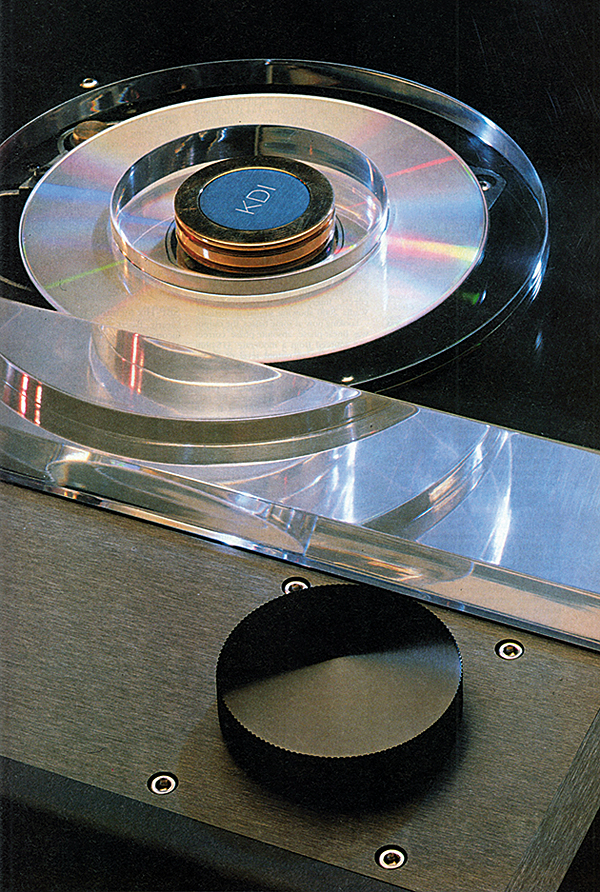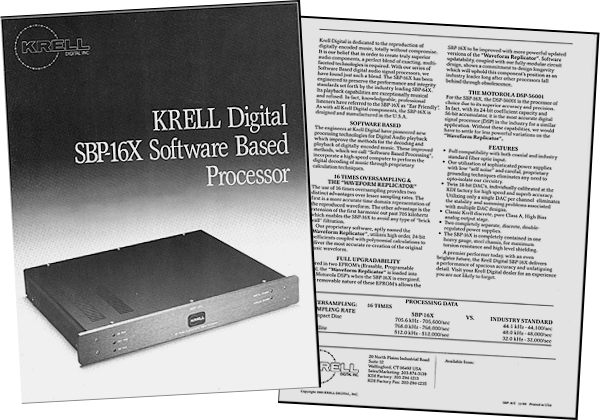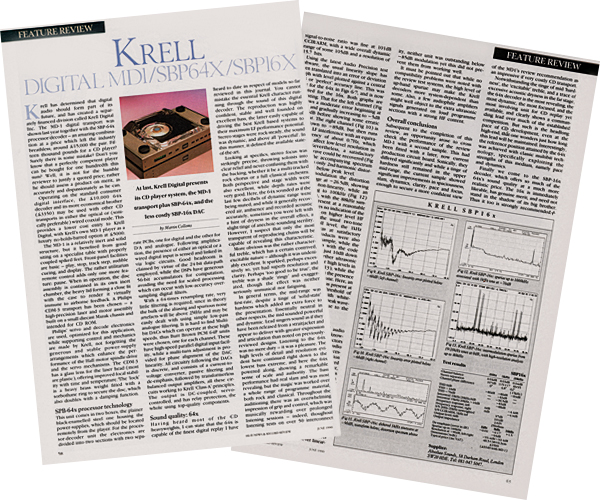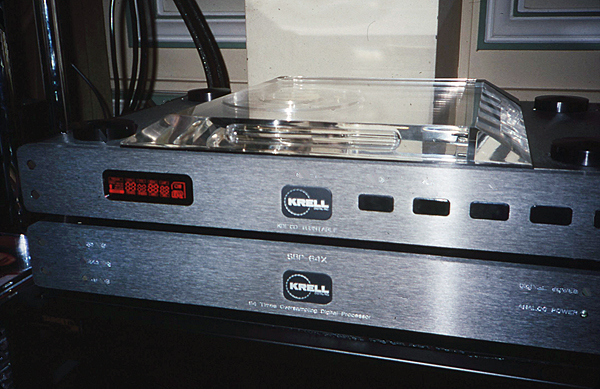Space age CD Page 2
Throughout the auditioning there was an overwhelming impression of grip and control that was musically rewarding over prolonged listening sessions. Listening so far had been with a Meridian 208 transport, but moving to the Krell MD-1 transport, I have to report a mixed reaction. In all expected respects there was no doubt concerning its exemplary abilities. It reinforced the 64X in its ability to sound stable and focused, authoritative, transparent and highly detailed. Yet I found that the MD-1 significantly increased the level of the upper-mid hardness of the 64X to a point where some marks were taken away from the combination.
With the 208 transport the 64X was sufficiently neutral for the effect to be forgiven, but with the MD-1 it was a feature of the sound to a point where some allowance might have to be made in terms of system matching. A brief trial with a valve power amplifier suggested that the effect might be cumulative over a chain of solid-state equipment, even of this excellent pedigree.

SBP-16X Technology
Clearly based on the 64X, the 16X incorporates the same front-end Yamaha ADIC, and although the power supplies are now on board the unit, the analogue and digital sections are still separate, and this includes the two toroidal mains transformers. The generous supplies employ Krell's standard 'Class A' discrete double regulators.
Space and expense are saved by halving the digital processor section, operating at 32x instead of 64x and then sharing the unit between the two channels, resulting in an effective resampled rate of 16x. This allows for a simplified serial drive to the individual 18-bit PCM-58 Burr-Brown D/A converter chips. The raw current output is chosen, transconducted to the required voltage by a discrete circuit, followed by mild passive filtering, de-emphasis, and the discrete output buffer, the latter DC-coupled and relay-muted. The interpolation system for this design is a proprietary code by Krell Digital called 'Waveform Replicator', held on EPROM chips and arranged for future upgrade as and when appropriate.
![]() Sound Quality 16X
Sound Quality 16X
Auditioned under the same conditions as the 64X, the 16X proved to be rather different, sufficiently so to alter one's overall opinion and provide further opportunities for system building and matching. While there can be no doubt that the 64X is subjectively superior to the 16X, the margin is small. Where the 64X has that unquestionably high degree of solidity, precision and resolution, the 16X counters with a sweetness and fluidity that is engaging.

After extended listening I concluded that the 16X was a first-rate decoder, of such neutral character that it will readily partner a wide range of equipment. In terms of absolute merit it comes in my view second only to the 64X, and achieved a score very close to my personal state-of-the-art at 96%. If my present sound quality ratings are to survive for more than a few months, there had better not be any more designs of this quality!
It sounded right almost from the first installation, and as it 'burnt in' it continued to improve in both clarity and control. At some point in the auditioning I was reminded of similarly good first reactions to the company's KSP-7B preamp when first reviewed. The 16X could be regarded as a digital-source equivalent to that.
Grand Slam
In the bass it approached excellence, exhibiting a very high degree of tunefulness and genuinely revealing articulation of different types of bass instrument. It was capable of great slam when the music demanded it, though not quite to the massive weight and scale of the 64X.
The mid was exceedingly neutral, almost 'analogue' if other CD replay systems are chosen as the yardstick. Free of strain or any significant hardness, the midrange was capable of very good transients, with convincing dynamics. No compressive or softening tendencies were detected with this converter, definition was consistently high, and perspectives very well portrayed.

Meanwhile, treble was creamy in texture, not audibly rolled-off in the obvious sense, yet perhaps a touch dulled and lacking sparkle at the very highest frequencies – not necessarily a disadvantage with much of the more caustic-sounding digital material. Treble definition equalled the high standard set in the midrange, sounding explicit and yet free from exaggeration. Vocal sibilants were natural, the sound articulate yet unaggressive.
Stereo soundstages were built on a large scale, with a fine front-to-back ratio despite a mild loss of absolute depth and transparency, this also noted with the 64X. Width was excellent, as was stereo focus, the presentation remaining clearly defined over a wide frequency range. Replay was alive in a dynamic sense, and music signals exhibited a fine measure of pace and rhythm. Ambience and recorded acoustics were recovered well, while the unit proved consistently revealing when older recordings were revisited.
Overall Conclusions
Subsequent to the completion of this review, an opportunity arose to cross check the performance of the review MD-1 with a second sample. This had been fitted with a later, now current production circuit board. They differed significantly sonically, and while a tinge of hardness still remained in the upper midrange, the current sample showed worthwhile improvements in spaciousness, slam, dynamics, clarity, pace and focus. It was enough to secure a more confident view of the MD-1's review recommendation as an impressive, if very costly, CD transport.

Notwithstanding the tinge of mid 'hardness', the 'excitable' treble, and a trace of excessive acoustic dryness in the far stage, the 64X decoder is the most revealing, the most dynamic, the most focused, and the most involving unit for CD replay yet available, and clearly shows a commanding lead over much of the established competition. But such is the headlong pace of CD development, even at the high-end, that one wonders just how long this lead will be maintained. Interestingly, the reference position attained by the 64X was achieved with classic multibit technology, specifically exploiting its strengths, namely pace and dynamics.
Finally we come to the SBP-16X decoder, which offers so much of the 64X's sound quality at a much more realistic price. The 16X is immediately likeable, has genuine merit, and need not stand in the shadow of its big brother. It too is therefore strongly recommended.


















































